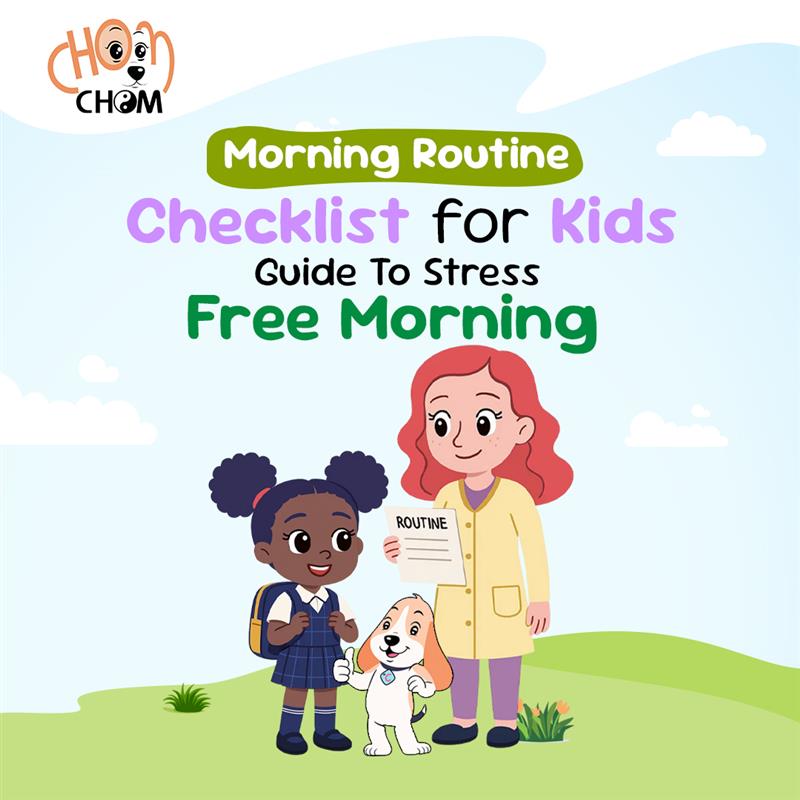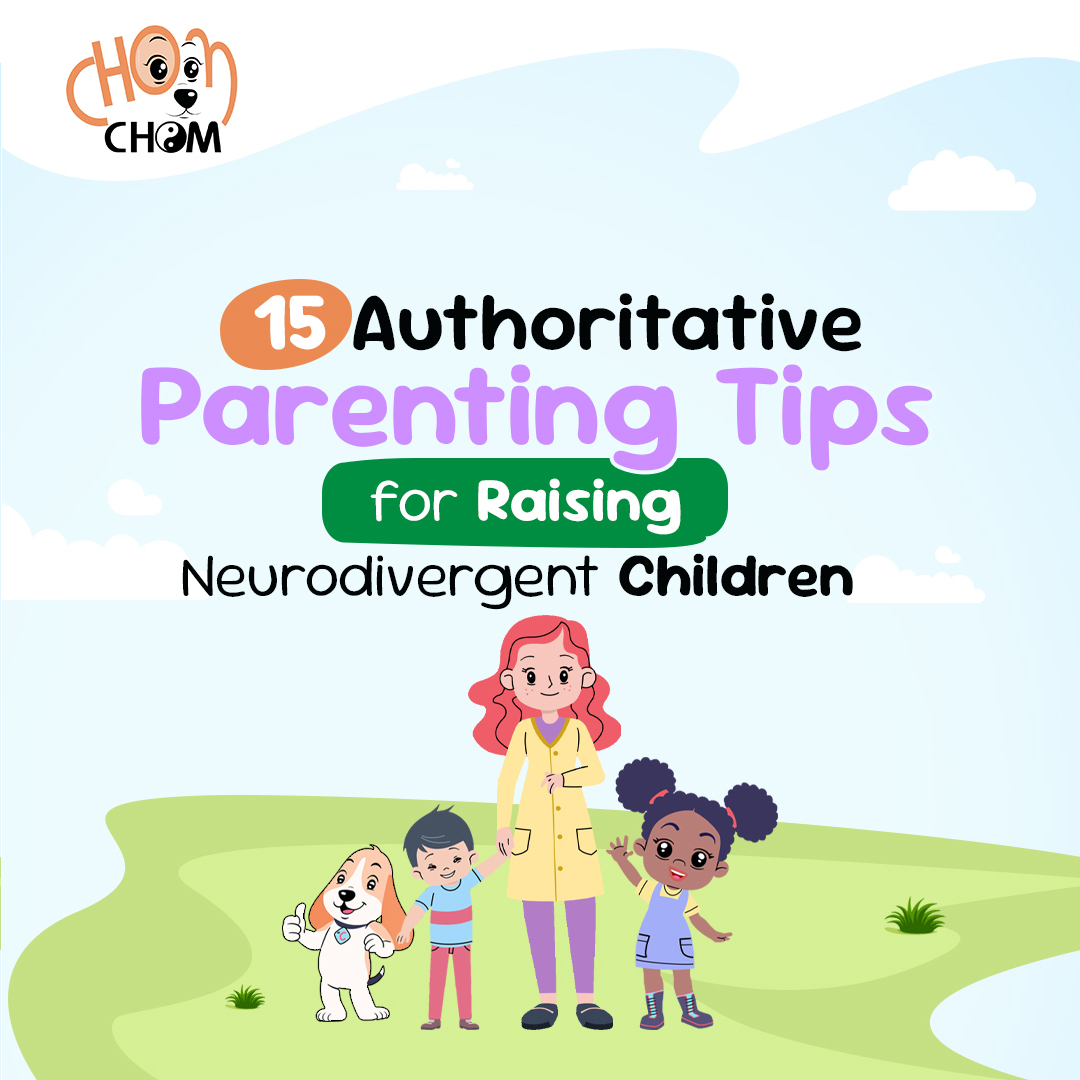
Ever had one of those stressful mornings where the children are late, no one is ready for school, bags aren’t packed, and breakfast lies untouched?
Getting the toddlers ready for school — ensuring they wake up at the right time, are properly dressed, have packed everything, and have not missed the bus — is not a Zen experience. It becomes even more daunting if their neurodivergent child is feeling anxious.
Every mother has had one of those days, and we look forward to helping you overcome this.
There is a simple method to break this cycle – a morning routine checklist for kids that is easy, accessible, and neurodiversity-friendly.
Neurodivergent children thrive in routine. They are far less anxious and throw fewer tantrums when they know what to do next. Keeping that in mind, let’s focus on creating a morning checklist for kids that works and benefits neurodivergent minds.
We have had the privilege of working with a variety of kids, including ones with ADHD, ASD, PHA, and more. We encourage you to adopt our curated routine from this comprehensive read.
Let’s begin.
How do Checklist Morning Routines help Neurodivergent Children?
While basic activities like waking up, brushing our teeth, showering, and eating are second nature to us, a neurodivergent brain works differently.
Children with ADHD, Autism Spectrum Disorder, PDA, or behavioral issues tend to struggle with functional and executive abilities. They struggle with everyday tasks, which become overwhelming.
As an ordinary person, it is challenging to understand why these children are struggling at all. However, a simple task, like having a little breakfast, involves a variety of cognitive processes. Planning, organizing, visions, sensory activities, and more – all of which are a hassle for a neurodivergent individual.
However, a simplified morning routine for kids makes the process manifold easier. With practice, an activity can be broken down into multiple actions that can be completed with focus and precision. The structure makes it manageable and increases the likelihood of completion.
Benefits of a Morning Schedule for Kids
We have worked with various types of neurodivergent young minds. Each is unique, with their struggles and strengths.
While no two neurodivergent kids are the same, routine has been beneficial to each of them. They are presently more confident, sure-footed with their tasks, and are entirely aware of their surroundings.
Here are all the benefits you can avail with a daily routine chart for kids –
- Reduced Stress – We are all aware that neurodiverse kids struggle with patience and are continuously overwhelmed with stress. A routine keeps them mindful of what’s coming next. It leads to a less hectic morning rush, enhanced organizational skills, and the comfort of predictability.
- Preparedness – A designated time to awake, freshen up, sit for breakfast, and leave for school – such a schedule ensures your kid is ready to face the day. The lack of routine creates uncertainty about what to do next, leading to an overwhelming sense of unease.
- Productivity and Confidence – As most neurodiverse children struggle with attention and focus, using a daily chart to complete tasks offers consistency. The tasks become diverse, compartmentalized, and manageable, leading to increased productivity and a boost in confidence.
- Time Management Skills – Although this does not occur immediately, continuous efforts with a daily chart ensure tasks are completed within the allotted time. The routine helps them master time management at home and amidst school activities.
- Emotional Regulation – When children with ADHD or ASD fail to complete basic tasks, they end up feeling overwhelmed and throw a tantrum. Most parents have observed that it becomes difficult to tackle. While there are several ways to incorporate emotional regulation activities for kids to minimize tantrums, a simple routine is a good place to start.
As a parent, when you build a consistent morning routine flowchart for your neurodiverse child, you are creating a pathway for them to take control of their lives. While it does not occur immediately, with practice, they can learn to master their emotions, remain organized, and excel academically.
Essential Elements of a Morning Routine Checklist
Now, let’s outline the essentials for a child-friendly morning routine that truly works.
A morning routine checklist should be simple, visual, and easy for children to follow. The goal is to break down the morning into small, manageable steps so kids know what to do next.
For neurodivergent children, especially, it creates clarity and reduces morning chaos.
Here are some essential elements to include in your checklist –
- Wake Up on Time – Set a consistent wake-up time that gives your child enough room to get ready without rushing. Use alarms, gentle reminders, or even visual cues, such as a sunrise clock. If you are creating this morning routine chart for pre-schoolers, ensure the waking-up methods are calm and regulated. They are still very young, and school is a completely new experience for them.
- Personal Hygiene – Break this down into smaller steps, such as brushing teeth, washing your face, combing your hair, and showering (if part of your morning routine). Kids respond better when each task is clearly listed.
- Getting Dressed – Lay out clothes the night before to save time. A morning checklist can remind them to wear socks and shoes and to pack extras if needed.
- Breakfast Time – Eating a healthy meal fuels focus and energy. Keep options consistent and straightforward so kids do not feel overwhelmed by too many choices.
- Packing the School Bag – Include reminders for books, a lunchbox, a water bottle, and any other necessary items for the activity. A visual chart can be constructive in this situation.
- Transition Time – Allow a few minutes to wind down, check the checklist, and prepare to leave without last-minute stress.
When each of these steps is clearly written or illustrated, mornings become smoother, predictable, and far less stressful for kids and parents.
Step-by-Step Morning Routine for Kids
Creating a structured, step-by-step morning routine makes the difference between a stressful start to the day and a smooth, stress-free morning.
For children, especially those who are neurodivergent, predictability, order, and clarity are essential. Instead of overwhelming them with broad instructions like “Get ready for school,” breaking the routine down into small, precise steps makes it manageable.
Here is a detailed step-by-step routine you can adapt for your child –
1. Wake Up on Time
The morning starts with a calm wake-up process. Children thrive on consistency, so setting the same wake-up time every day helps regulate their body clock.
- Use a gentle alarm or a sunrise clock that mimics natural light.
- For younger children, a parent’s soft reminder or a favorite morning song can make waking up less stressful.
Neurodivergent kids may need extra time to transition from sleep to wakefulness, so build in a buffer of 5–10 minutes before moving to the next step.
2. Freshen Up (Bathroom Routine)
After waking up, the first task is heading to the washroom. Since hygiene routines can feel overwhelming, break them down into small steps:
- Brush teeth (use a visual checklist showing a toothbrush, toothpaste, and water).
- Wash face and hands.
- Comb or brush hair.
- If showering in the morning is part of your child’s routine, add it here, but keep the time short to avoid delays.
Many neurodivergent children benefit from visual schedules taped to the bathroom mirror, reminding them of each step in order.
3. Get Dressed
Getting dressed can sometimes lead to power struggles, especially if your child is sensitive to textures, tags, or certain clothing styles.
To make this step easier –
- Lay out clothes the night before, so there’s no last-minute decision-making.
- Offer two simple choices to avoid overwhelming them (“Do you want the blue shirt or the red one?”). If their school has a uniform, the process becomes much easier.
- Break it down into steps: underwear, pants/skirt, shirt, socks, and shoes.
- Use a mirror for self-checks to help children feel independent and confident.
4. Eat Breakfast
Breakfast is essential for energy, focus, and mood throughout the school day. However, mornings can get rushed, and neurodivergent children may feel anxious when faced with too many food choices.
- Stick to a short list of healthy breakfast options (like cereal, fruit, eggs, or toast).
- Prepare as much as possible the night before (such as cutting fruit, portioning cereal, or prepping sandwiches).
- Avoid rushing; schedule at least 10–15 minutes for eating calmly.
Create a visual chart of “Breakfast Done” so kids remember to move on after finishing.
5. Pack the School Bag
Packing bags is often the most stressful step for both kids and parents. Missing items create anxiety for children and frustration for parents. A toddler morning routine chart makes this process simple –
- Books and notebooks are needed for the day.
- Lunch box and water bottle.
- Homework assignments.
- Special items (like sports gear, art supplies, or project materials).
- A small “comfort item” (like a fidget toy or stress ball) for neurodivergent children.
Create a laminated “What’s in My Bag Today” chart that your child can tick off each morning.
6. Personal Care and Extras
After dressing and eating, some children may need additional steps before leaving the house. These can include –
- Putting on sunscreen or moisturizer. While a mother can aid the process, allowing them some self-care time boosts confidence and reveals a personality they may not have known they had.
- Checking if they have glasses, hearing aids, or other assistive devices.
- Taking any prescribed medication.
- A quick self-check in the mirror (“Do I look ready for school?”).
The step helps children build responsibility and independence, reinforcing that they can manage their day.
7. Free/Transition Time
Instead of rushing straight to the door, allow 5–10 minutes for transition. This can include –
- Quiet play (reading a book, drawing, or playing with a toy).
- A short mindfulness activity, like deep breathing or stretching.
- Listening to calming music before heading out.
A transition time reduces stress and gives kids a mental buffer before school. For neurodivergent children, it also helps regulate emotions and lowers anxiety about the day ahead.
8. Put on Shoes and Outerwear
It may sound simple, but putting on shoes, jackets, or coats is often where mornings stall. To prevent delays –
- Keep shoes and jackets in a designated spot near the door.
- Use Velcro shoes or slip-ons if tying laces is intricate for your child.
- Add a visual reminder (“Shoes and Jacket On”) near the door.
Practice independence by encouraging your child to do this step without help, even if it takes extra time at first.
9. Final Bag Check and Leave for School
Before leaving, encourage your child to do a quick final check –
- Is the bag packed and zipped?
- Is the lunch box inside?
- Do they have their water bottle?
- Are they wearing shoes?
Putting It All Together –
Here’s how a typical morning routine flow might look in practice:
- Wake up at 6:45 am
- Bathroom routine (teeth, wash, hair) – 10 minutes
- Get dressed – 10 minutes
- Eat breakfast – 15 minutes
- Pack school bag – 5 minutes
- Personal care/medication – 5 minutes
- Transition/free time – 5–10 minutes
- Shoes and outerwear – 5 minutes
- Final check and leave – 2 minutes
This adds up to about 60–70 minutes, a balanced window that allows children to move at their own pace while still keeping mornings organized.
Why This Step-by-Step Works?
As mentioned, neurodivergent children thrive in a structured environment. So, here’s why this daily chart for kids works perfectly –
- Clarity – Children know exactly what’s next and can avoid confusion.
- Structure – Predictability reduces stress and anxiety, particularly for neurodivergent kids.
- Independence – Each step empowers children to take responsibility for their own routine.
- Flexibility – Parents can adjust steps according to their child’s age, needs, and strengths.
A structured, step-by-step morning routine helps parents create a predictable and positive start to the day. Over time, children become more independent, organized, and confident, making mornings less of a battle and more of a bonding time for the family.
Visual Aids and Tools That Make Routines Easier
For children, especially those with neurodivergent conditions, visuals are often more effective than verbal instructions. While words can sometimes be overwhelming or easily forgotten, visual aids provide a clear, concrete reminder of what needs to be done next.
They make routines predictable, engaging, and much easier to follow. Incorporating the right tools can turn morning chaos into an organized flow. Here are some tried-and-tested options –
- Routine Charts – A simple chart with pictures or icons for each step (e.g., wake up, brush teeth, get dressed, eat breakfast, pack bag) helps children visualize the sequence. Laminate the chart and allow kids to tick off or place stickers after completing each task.
- Checklists – For slightly older kids, written checklists work wonders. Breaking tasks into smaller steps, like “put on socks” or “fill water bottle,” provides clarity. Magnetic or wipe-clean boards can be reused daily.
- Timers and Alarms – Many kids, particularly those with ADHD, benefit from clear time boundaries. Visual timers, sand timers, or digital alarms can help keep tasks on track without the need for constant parental reminders. For example, a five-minute timer for brushing teeth or a ten-minute timer for breakfast.
- Color Coding – Assigning colors to tasks or items (such as red for “bathroom time,” green for “breakfast,” and blue for “pack bag”) makes routines more intuitive. Color-coded folders, baskets, or even sticky notes can support this.
- Apps and Digital Tools – There are child-friendly apps that use pictures, sounds, and reminders to guide routines. For tech-savvy families, these can be fun and interactive alternatives to paper charts.
- Build Resilience – A routine can sometimes fall apart; ensure your kid remains focused on the process. Help your child build emotional resilience, confidence, and focus with digital games like MoodQuest and Color Catch Adventure.
- Visual Cues in the Environment – Place reminders in strategic locations: shoes by the door, toothbrush on the sink counter, and water bottle near the bag. These cues reduce decision-making and create natural prompts.
Visuals and tools help parents shift from constant verbal nagging to silent, structured guidance. The result? – Children feel more independent, parents feel less stressed, and mornings flow with ease and predictability.
Tips for Parents to Ensure a Smooth Morning
Even the best morning routine can fall apart if parents are unprepared or stressed. A smooth morning is not just about what children do, but also how parents manage time, expectations, and the environment.
Here are some practical tips to make mornings calmer and more manageable –
- Prepare the Night Before – Lay out clothes, pack the school bag, and prep lunchboxes in the evening. It cuts down decision-making in the morning and prevents last-minute chaos.
- Maintain Consistent Sleep Schedules – Children who sleep on a regular schedule tend to wake up with better energy and a more positive mood. Ensure your child gets enough rest (9–11 hours, depending on age) and avoid late-night screen time, as it can disrupt sleep.
- Build Buffer Time – Add 5–10 minutes to the morning routine. It allows for delays without creating stress, especially helpful for neurodivergent children who need more transition time.
- Use Positive Reinforcement – Instead of rushing with “Hurry up!”, praise progress with simple affirmations, such as “Great job brushing your teeth on time!” Small rewards, such as stickers or tokens, or even a piece of chocolate, can motivate children to stay on track.
- Stay calm and Patient – Children often mirror parental emotions. If you are anxious, they will pick up on it. A calm and reassuring tone sets the mood for a smoother morning.
- Limit Distractions – Keep screens, toys, or unrelated activities out of the morning routine zone. Structure and focus are easier to maintain when distractions are minimized. And if you cannot avoid digital interaction, ensure they are using something useful, like a skill-building app for kids.
- Involve Children in the Process – Let kids help create their checklist or choose between two breakfast or clothing options. Involvement builds ownership and reduces resistance.
- Model the Routine – Children learn best by observing. When parents follow their own morning routine, getting ready calmly and on time, it reinforces the habit in kids.
By combining structure with flexibility and guidance with encouragement, parents can transform mornings into a predictable and peaceful start to the day.
Over time, your child will follow routines better while gaining confidence and independence in managing their mornings.
Common Routine Chart Challenges and How to Overcome Them
Children, especially those who are neurodivergent, often face hurdles that disrupt the flow of their checklist. This is quite common; however, there is no need to worry.
The key is not to expect perfection, but to anticipate challenges and prepare practical solutions. Here are some common issues and how parents can manage them –
- Difficulty Waking Up – Many kids resist getting out of bed, which can lead to delayed wake-up times. A consistent bedtime routine, combined with gentle wake-up methods such as soft alarms, music, or a sunrise clock, helps them adjust more easily.
- Getting Distracted Easily – Children may wander off while dressing or eating. Break tasks into smaller steps and use visual timers to keep them on track. For example, a five-minute timer for getting dressed can work wonders.
- Meltdowns or Refusals – For neurodivergent children, unexpected changes trigger stress. Build flexibility into your routine by keeping a backup outfit ready or allowing a few extra minutes to calm down before moving to the next step.
- Forgetfulness – Children often leave behind items such as water bottles, homework, or shoes. A visual checklist by the door or a “final bag check” step ensures nothing is missed.
- Parent Stress – Sometimes, the biggest challenge is the parent’s own frustration. Staying calm, lowering your voice, and using positive reinforcement rather than nagging can shift the energy of the morning.
Building a functional morning routine checklist for kids requires patience, practice, and fine-tuning. Be mindful of how you engage with the child throughout the process. The stress you impose on them typically shows how they handle their emotions.
Long-Term Impact of a Consistent Routine for Kids
A consistent morning routine for kids before school is more than just a way to get them out of the house on time; it’s a valuable way to prepare them for the day ahead. Furthermore, it lays the foundation for lifelong skills.
When kids, especially neurodivergent ones, follow structured steps every day, they gradually develop executive functioning skills such as organization, problem-solving, planning, time management, and emotional regulation. These are not just morning skills; rather, essential abilities that help children thrive in school, at home, and later in life.
The long-term impact extends beyond mornings. Children learn to manage transitions more effectively, take responsibility for their tasks, and develop a stronger sense of control over their environment.
At ChomChomTech, we are here to support you on this journey. Through our specially designed bite-sized skill-building games and activities, we help neurodivergent children strengthen their executive skills in fun and engaging ways.
Together, we can turn mornings from a daily battle into a launchpad for confidence, independence, and success.
Download the App to Explore More!







